Instructional Series
Welcome to the English medium literacy instructional series teaching and learning resources for years 1 to 8.
- Gold
- Purple
- Blue
- Red
- Green
- Yellow
- Orange
- Turquoise
- Magenta
- English
- Social Sciences
- Science
- Health and Physical Education
- Technology
- The Arts
- Mathematics and Statistics
- Learning Languages
- Nature of science
- Living world
- Nature of technology
- Statistics
- Geometry and Measurement
- Planet Earth and beyond
- Technological knowledge
- Physical world
- Material world
- Number and Algebra
- Technological practice
- Gather and interpret data
- Use evidence
- Critique evidence
- Engage with science
- Interpret representations
- Articles
- Stories
- Poems
- Plays
- Activity
- Comic
- Kākano | Seed
- Tupu | Seedling
- Māhuri | Sapling
- Rākau | Tree
- Consonant digraphs
- Consonant patterns
- Initial and final blends
- Long vowels
- Short vowels
- Single consonants
- Complex morphemes
- Tense
- Vowel digraphs
- Contractions
- Syllable types
/content/search?SearchText=&SubTreeArray[]=22574&ColourWheelLevel=all&CurriculumLevel=all&ReadingYearLevel=all&LearningArea=all
Search results
1187 items - Showing 941 - 950
-
Like, Share, Subscribe
by Cassandra Tse
illustrations by Jez Tuya
This humorous play is a take on a familiar scenario: thoughtless online behaviour and our sometimes unhealthy relationships with screens. Although grossly exaggerated, Cassandra Tse’s point is still relevant, cleverly side-stepping the usual sides by portraying the adults getting it wrong and the kids getting it right.
-
Captain Cook Charting Our Islands
This article describes Captain Cook’s first visit to New Zealand where he charted the coastline. It focuses on Cook’s abilities as a skilled maker of charts and maps rather than as a great explorer. It also examines the maths involved in Cook’s chart making (a perfect, real-life example of maths in everyday life).
-
Connected 2020 Level 2 – Digging Deeper
At times, Connected themes require the introduction of concepts that students at this curriculum level may not be able to fully understand. What matters at this stage is that students begin to develop understandings that they can grow over time.
Squawkzilla
Squawkzilla is a giant parrot that lived in New Zealand 19 million years ago. Its bones were dug up in 2008, but it was not correctly identified for another ten years. This article tells the story of Squawkzilla’s discovery. It demonstrates how scientists work and how it is possible to make educated guesses about what life used to look like millions of years ago. It shows that scientific “discoveries” often take time and require careful observation and teamwork.
City of Bugs
This article follows a science project conducted by students in three Dunedin schools. The topic – investigating which inner city ecosystem supports the most insects and invertebrates – should appeal to most students. The article demonstrates how to conduct a scientific investigation. It also emphasises the importance of communicating your findings so people can take action.
Whakaotirangi and her Kete of Kūmara
This article recounts an important story from the oral tradition of Tainui. It tells of how the iwi’s ancestor, Whakaotirangi, brought kūmara and other plants to Aotearoa and describes the techniques she used to plant, grow, and store them. Whakaotirangi’s gardens made it possible for Tainui to settle in one place, rather than having to keep moving to seek food. In time, Whakaotirangi’s kete of kūmara changed how people live across Aotearoa.
Making Scents
This article follows a class project that students conducted after their teacher challenged them to find out how the smell gets into a scented candle. In the process, they learned about distillation, states of matter, and what it takes to become scientists and technologists.
-
Connected 2020 Level 3 – Kaitiakitanga
At times, Connected themes require the introduction of concepts that students at this curriculum level may not be able to fully understand. What matters at this stage is that students begin to develop understandings that they can grow over time.
Te Tapa Ingoa
This article explores how early Māori went about naming and grouping the plants and animals they found around them. It explains what this process reveals about Māori ways of viewing the world and the framework provided by whakapapa. It prompts comparisons with the Linnaean system for naming and grouping organisms and describes an example of Māori and Pākehā working together and drawing on knowledge from both systems.
Trees, Seas, and Soil
This article examines how different processes combine to affect the balance of carbon in the atmosphere. It explains that the increased level of carbon dioxide in the atmosphere is having a huge effect on climate – an effect that can be reduced, as carbon is finite. Carbon sinks, in the form of forests, the ocean, and soils, could help to balance the carbon levels in the atmosphere. However, each form has its own complications. The article concludes that human use of fossil fuels needs to be reduced to protect the carbon sinks around us.
Raʻui: Giving It Back to the Gods
This article explores a scientific issue from a Pacific worldview. It describes how the people of the Cook Islands have attempted to manage and protect their marine resources with the tradition of ra‘ui. The article highlights the very real issues that make success difficult and the diversity and validity of different people’s perspectives on ra‘ui.
Life in Aotearoa New Zealand
This article describes the evolutionary development of life in Aotearoa New Zealand and addresses the question of why our flora and fauna are so distinct. It introduces and explains the concepts of evolution and adaptation and offers a brief overview of how the land itself changed over many millions of years.
-
Connected 2020 Level 4 – Feeling the Heat
At times, Connected themes require the introduction of concepts that students at this curriculum level may not be able to fully understand. What matters at this stage is that students begin to develop understandings that they can grow over time.
Wildfire
The article explores wildfires. It looks at what they are, what causes them, how they affect us, and how they are affected by the climate. In the process, it gives scientific explanations of some big ideas and processes, including climate change, carbon sinks, deforestation, adaptation, and feedback loops. The article ends by suggesting ways we can work together to reduce the risk of wildfires.
Pā Tūwatawata and the New Zealand Wars
This article describes the development of pā technology in the nineteenth century, as iwi and hapū defended themselves and their land against invasion. It explains how the basic features of pā technology were adapted in response to invasion by Pākehā – utilising the rich knowledge Māori held about their land.
Foulden Maar: Fossils or Food?
This article explains the formation of Foulden Maar, the remains of an ancient lake formed by a volcanic eruption millions of years ago. As layers of silica-rich mud built up over thousands of years, it provided perfect conditions for fossilising the remains of plants and animals that fell to the bottom of the lake. However, the silica also has commercial value. The article explores the perspectives of a range of stakeholders who have different opinions about the future of the maar. It prompts critical thinking and finishes with a call to social action.
Fostering Felines
This article demonstrates how students at Sir Douglas Bader Intermediate School designed a technological device to solve a community problem – how to care for the thousands of newborn kittens handed in to the SPCA each year. It encourages the reader to consider the issues, giving a model for how the same process could be applied to other problems.
-
City of Bugs
This article follows a science project conducted by students in three Dunedin schools. The topic – investigating which inner city ecosystem supports the most insects and invertebrates – should appeal to most students. The article demonstrates how to conduct a scientific investigation. It also emphasises the importance of communicating your findings so people can take action.
-
Squawkzilla
Squawkzilla is a giant parrot that lived in New Zealand 19 million years ago. Its bones were dug up in 2008, but it was not correctly identified for another ten years. This article tells the story of Squawkzilla’s discovery. It demonstrates how scientists work and how it is possible to make educated guesses about what life used to look like millions of years ago. It shows that scientific “discoveries” often take time and require careful observation and teamwork.
-
Whakaotirangi and her Kete of Kūmara
This article recounts an important story from the oral tradition of Tainui. It tells of how the iwi’s ancestor, Whakaotirangi, brought kūmara and other plants to Aotearoa and describes the techniques she used to plant, grow, and store them. Whakaotirangi’s gardens made it possible for Tainui to settle in one place, rather than having to keep moving to seek food. In time, Whakaotirangi’s kete of kūmara changed how people live across Aotearoa.
-
Making Scents
This article follows a class project that students conducted after their teacher challenged them to find out how the smell gets into a scented candle. In the process, they learned about distillation, states of matter, and what it takes to become scientists and technologists.
-
Te Tapa Ingoa
This article explores how early Māori went about naming and grouping the plants and animals they found around them. It explains what this process reveals about Māori ways of viewing the world and the framework provided by whakapapa. It prompts comparisons with the Linnaean system for naming and grouping organisms and describes an example of Māori and Pākehā working together and drawing on knowledge from both systems.

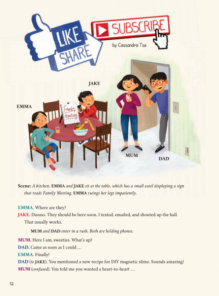
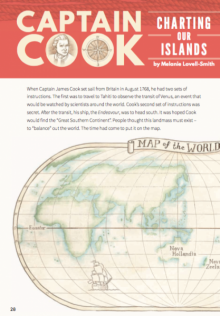
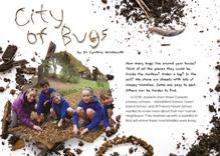
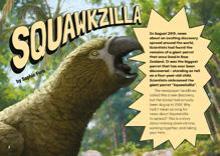
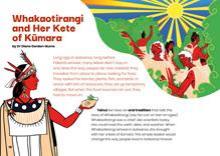
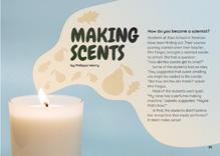
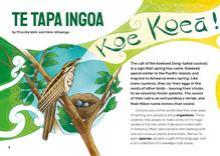


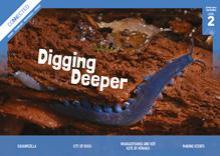
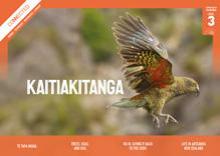
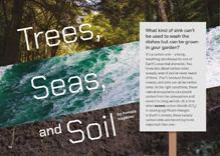
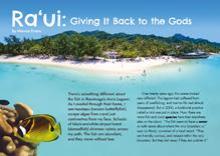

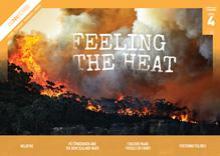
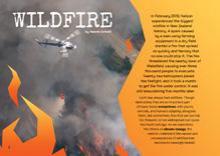
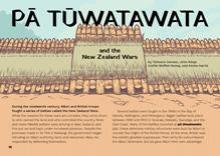
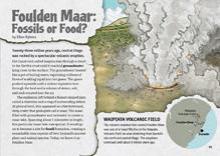
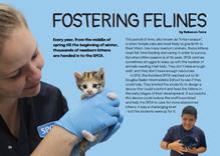
 Literacy Online home
Literacy Online home
